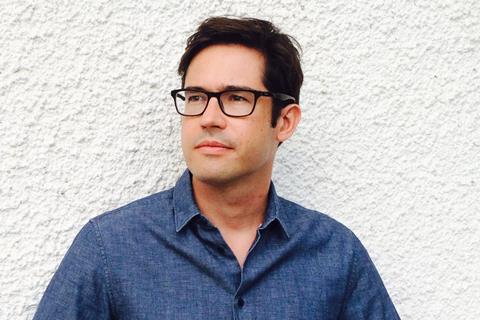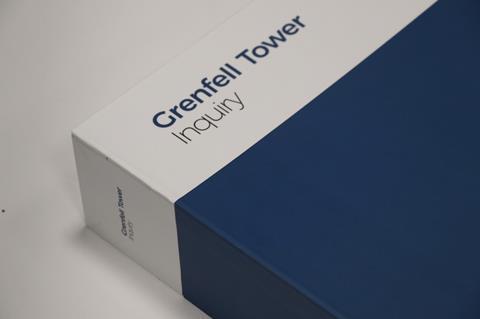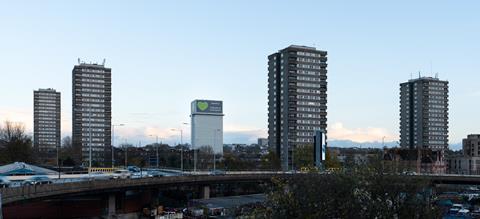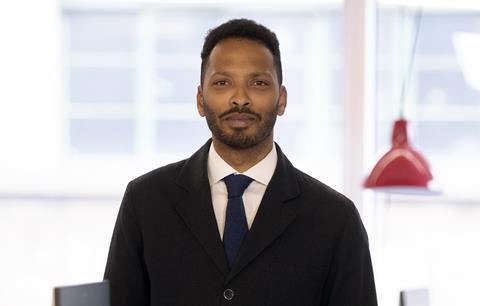The Grenfell tragedy underscores the vital role of collaboration and expert knowledge within the construction ecosystem

The final report of the Grenfell Tower Inquiry is not just a reckoning for those directly involved in the disastrous refurbishment – it’s a wake-up call for the entire architectural profession. What is now painfully clear is that the failures that contributed to the 2017 fire, which claimed 72 lives, reflect not just technical errors but a fundamental erosion of professional responsibility and expertise.
In an echo of Dame Judith Hackitt’s 2018 Independent Review of Building Regulations and Fire Safety, the Grenfell Inquiry report underlines the urgent need for reform within the profession, highlighting the importance of education, training, and a renewed commitment to the technical and ethical dimensions of practice within architecture, and across the industry.
From an architectural perspective, perhaps the most damning indictment in the report was that reserved for Studio E, the practice tasked with designing the refurbishment. The Inquiry found that Studio E “fell well below the standard to be expected of a reasonably competent architect.”
This was not a one-off mistake; it was a systemic failure – a failure to understand the responsibility architects carry and the technical rigour required for such a complex project. This should serve as a stark reminder for all of us: safety, regulations, and technical expertise cannot be afterthoughts.
While we know that there are many practices and indivudal architects that take their professional responsibilities profoundly seriously, the report asks whether the example of Studio E’s professional neglicence suggests a more widespread issue reflecting a casual attitude to building regulations and safety. And if so, does this culture stem from an attitude around architectural education and training - including continuing professional development (CPD) - that has for decades often appeared to lack focus on fundamental competencies and the importance of regulatory compliance?
The procurement flaws and Studio E’s appointment
Studio E was appointed without any competitive tender and without being required to demonstrate that it had the relevant skills, knowledge, or experience for such a high-stakes project. The practice had never worked on a high-rise residential project before, yet it was tasked with one of the most sensitive types of refurbishments – overcladding an occupied tower block. This was a decision that, according to the Inquiry, deprived the client of the opportunity to select a more qualified firm, one with experience in high-rise cladding.
The catastrophic failures in material selection and compliance
Studio E’s failure to understand and manage its role was highlighted extensively within the report. As the lead designer on the project, initially employed by Kensington and Chelsea Tenant Management Organisation (TMO) and then novated to the main contractor, the firm was responsible for the design and specification of the cladding, including the combustible ACM cladding that became the primary cause of the fire. The report is scathing in its assessment: “Studio E specified combustible materials without considering whether the resulting structure would comply with fire safety regulations.”

The inquiry was clear that substantial responsibility lies with the manufacturers and certifying bodies that – either through negligence or outright deceit – misled the industry. As is amply demonstrated by their widespread use in high-rise schemes across England and Wales, Studio E was not alone in misunderstanding the nature of the materials they were specifying.
Architects cannot simply pass the buck when it comes to safety. We are the first line of defence, and it is our duty to scrutinise every detail of the projects we oversee
But this is a profound lesson for the profession. The inquiry panel, advised by former RIBA president Paul Hyett, concluded that any reasonably competent architect “should have known, or at any rate should have taken the trouble to discover” the dangers of using such materials on a high-rise. It is clear from the report that Studio E misunderstood its responsibilities, assuming that subcontractors and suppliers would ensure that materials were compliant.
This is precisely the kind of thinking that the profession needs to leave behind. Architects cannot simply pass the buck when it comes to safety. We are the first line of defence, and it is our duty to scrutinise every detail of the projects we oversee.
The importance of expertise and sector-specific knowledge
One of the central themes that emerges from the Grenfell Inquiry is the importance of expertise. Architecture is a broad and diverse profession, and not every architect can or should be designing every type of building. The report exposes how Studio E lacked the expertise necessary for a project involving high-rise overcladding, and it failed to seek out the specialist advice that could have compensated for this. The failure to understand this, or to take action to remedy it, is a key reason why the practice bore “a very significant degree of responsibility” for the disaster.
This raises an uncomfortable but necessary point for our profession: not all practices, nor all registered architects, are qualified to be working on all building types. While the opportunity to learn and demonstrate new competencies is critical to enabling new practices to enter specific market sectors, it seems increasingly clear that the one-size-fits-all approach to architectural education and training no longer works.
>> Also read: We urgently need Principal Designers. Are architects ready to step up?
>> Also read: Why architects must embrace the Principal Designer role
High-risk projects – particularly those involving the safety of residents in high-rise buildings – demand a level of expertise that not all firms will have. This is not a failure; it’s a reality of a profession that spans many different specialisms. What matters is recognising when additional expertise is required and ensuring that architects are equipped to handle the responsibilities they take on.
This could require, as RIBA president-elect Chris Williams suggested to me in a recent interview, a move towards greater specialisation for architects. Long resisted, it might be time for specialist architectural qualifications and registrations – as already used for conservation architects – to foster a greater culture of accountability. It might also help restore respect for the profession.
Whether the profession embraces the new Principal Designer role, as established through the Buidling Safety Act, will be another marker of the extent to which architects are willing to embrace change.
A new direction for education and training
The failings exposed by the Grenfell Inquiry have already led to significant changes within architectural education and professional standards. Both the Architects Registration Board (ARB) and the Royal Institute of British Architects (RIBA) have acknowledged the need for reform. Most notably, ARB has instigated fundamental reforms of architectural education, introducing new Competency Outcomes that all providers of ARB accredited qualifications in architecture must meet, alongside compulsory CPD for registered architects for the very first time. The Inquiry report calls on both organisations to review whether the changes they have instigated are sufficient.
There is now a growing movement within schools of architecture to emphasise safety, technical competence, and regulatory understanding as fundamental to the profession. This shift is crucial. And for a younger generation, these considerations sit squarely alongside sustainability, inclusion, and community engagement as key dimensions of an ethical profession.

We can no longer afford to treat the technical and regulatory aspects of architecture as secondary to design. Safety and compliance must be embedded in the architectural curriculum from day one, and this needs to continue into practice.
Understanding the processes around construction, procurement, specification, and building regulations cannot be postponed to some future phase of professional development. Architects must be prepared to engage with these issues from the start of their education, and practices need to support this by providing the right training and oversight.
The Inquiry has made it clear that a cultural change is needed within the industry. As Thouria Istephan, one of the expert panellists, said in the aftermath of the report’s publication, “If you work in the construction industry and you do not feel the weight of responsibility for keeping people safe, you are in the wrong job.”
This sentiment must resonate deeply with architects. The work we do has real consequences, and the Grenfell tragedy is a devastating reminder of what happens when those responsibilities are neglected.
More on the Grenfell Inquiry Phase 2 report
What were Studio E’s failures on the Grenfell Tower refurbishment?
Grenfell Inquiry report: Studio E “bears a very significant degree of responsibility” for disaster
Decades of central government failure led to Grenfell tragedy, says inquiry
The Grenfell Inquiry has made it abundantly clear that this is not just an architectural issue – it’s about the entire construction industry. Architects cannot continue to operate in isolation, assuming their responsibility ends at the edge of their drawings. The complexity of modern construction, with its web of regulations, materials, and contractors, demands cross-industry action and shared accountability. As the Grenfell Inquiry has shown, no single actor can – or should – shoulder the responsibility alone.
To truly embed fire safety, compliance, and professional responsibility into the DNA of construction, we need more than just reforms within architecture. There is a strong argument for introducing industry-wide fire safety training modules, shared across all disciplines.
Such training could help embed a common understanding of fire safety, professional duties, and compliance, creating a shared language between architects, contractors, engineers, and suppliers. This would help foster the kind of collaboration and communication that is critical to preventing future tragedies.

Neal Shasore, head of the London School of Architecture, is spearheading efforts to introduce this holistic, industry-wide change. Speaking to BD yesterday, he said: “The recommendations from the inquiry underline and reinforce much of the good work that is already under way, but I still don’t feel the profession is properly awake to the implications.”
While the report praises the efforts of RIBA and ARB, Shasore pointedly asked: “How effective has that work actually been so far?” He also questioned why the industry continues to operate in professional silos. “We need the learning experience to promote cross-industry discussion along the lines of the Hackitt report,” Shasore added, referring to the landmark review that called for greater integration and competence across the entire sector.
If we are serious about learning from Grenfell, architects and the wider construction industry need to break down these silos. Cross-discipline learning and collaboration are essential to ensure that everyone involved in the design, procurement, and construction process speaks the same safety language. Only then can we create a construction culture where every player, from architect to contractor, understands and shares the responsibility for keeping people safe.
A recommitment to professionalism
The Grenfell Tower fire should never have happened. But if there is one thing the Inquiry has shown, it is that our profession must do better. Expertise, responsibility, and a commitment to safety must be non-negotiable. The lessons from Grenfell must not only be heard but acted upon, with reforms to education, training, and practice that ensure no project is undertaken without the necessary skills and understanding in place.
The path forward is clear. We must equip architects to fulfil their roles with competence and care, and we must ensure that the profession as a whole places safety at the forefront of every decision. The tragedy at Grenfell has shown us what is at stake. It is now our duty to make sure it never happens again.
>> Also read: UCL launches first UK Fire Safe Design MArch programme
Ben Flatman is architectural editor for Building Design and a qualified architect
















2 Readers' comments